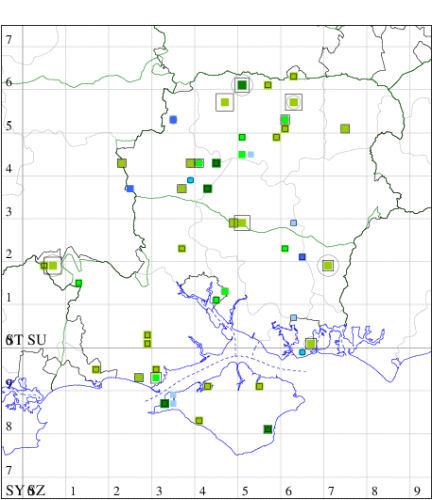Celypha cespitana
Checklist Number49.164 [B&F: 1067]
Verification
Record will normally be accepted but photo evidence may be required - check with CMR if not sure of identity
Classification
| Family: | Tortricidae |
| Subfamily: | Olethreutinae |
| Genus: | Celypha |
| Species: | cespitana |
| Authority: | (Hübner, [1817]) |
Local on chalk downland, dry pastures, sand-hills and sea-cliffs throughout the British Isles, predominantly coastal in the north of its range. Widespread but distinctly uncommon in Hampshire and on the Isle of Wight. Wingspan 12-16 mm. Similar in forewing markings and coloration to the rare and local C. doubledayana, but usually larger and differs in the shape of the forewing, the costa being more gently arched and the apex more angular and prominent [Bradley]. Day-flying, occasionally comes to light. Larva feeds on Wild Thyme, Common Sea-lavender and Thrift.


The abundance in each month is indicated as follows:
 No records
No records Very occasional
Very occasional Irregular
Irregular Uncommon
Uncommon Off-peak, but not unusual
Off-peak, but not unusual Off-peak, but not unusual
Off-peak, but not unusual Main flight time
Main flight time| J | F | M | A | M | J | J | A | S | O | N | D | |
|---|---|---|---|---|---|---|---|---|---|---|---|---|
| Adult |  |  |  |  |  |  |  |  |  |  |  |  |
| Larval |  |  |  |  |  |  |  |  |  |  |  |  |




